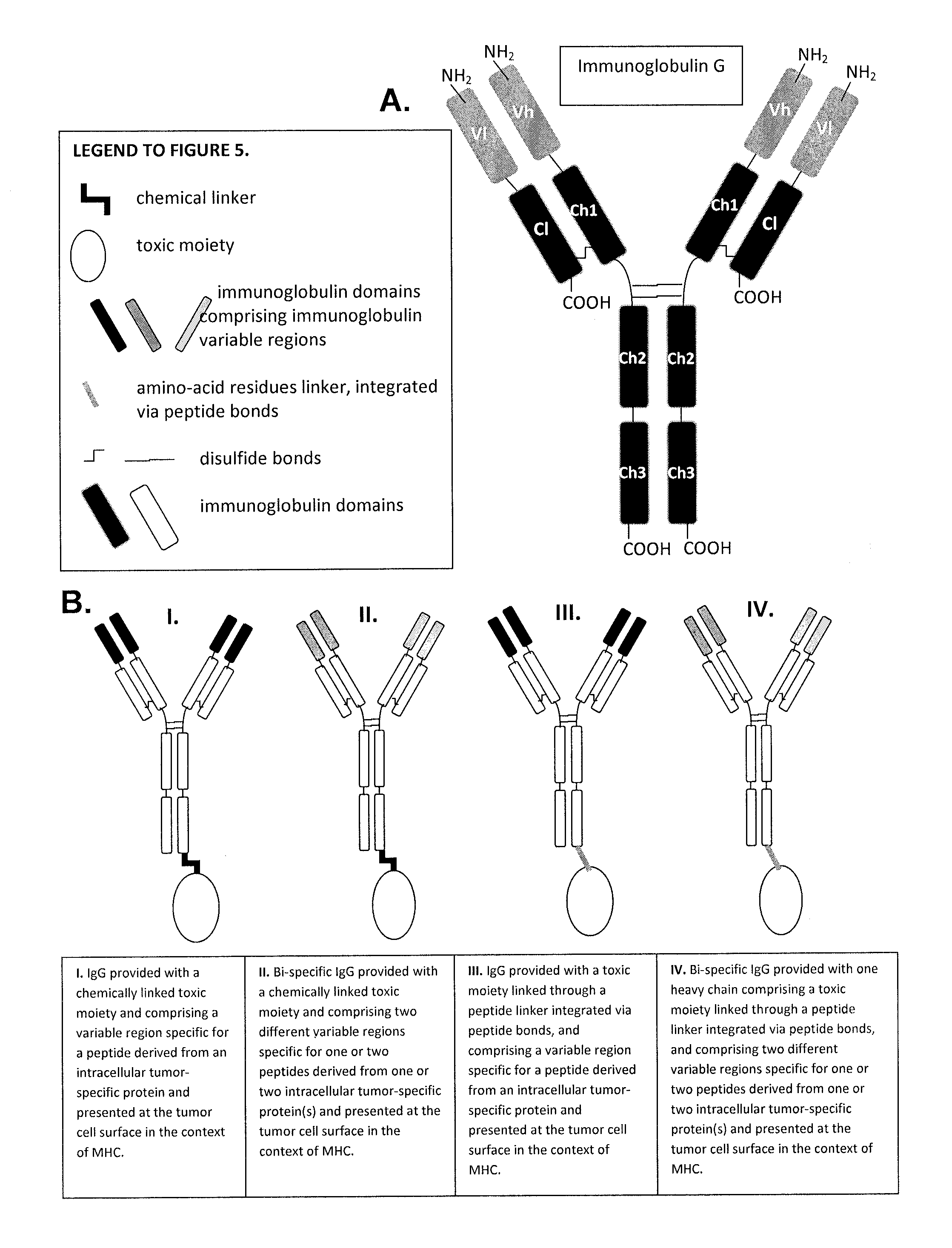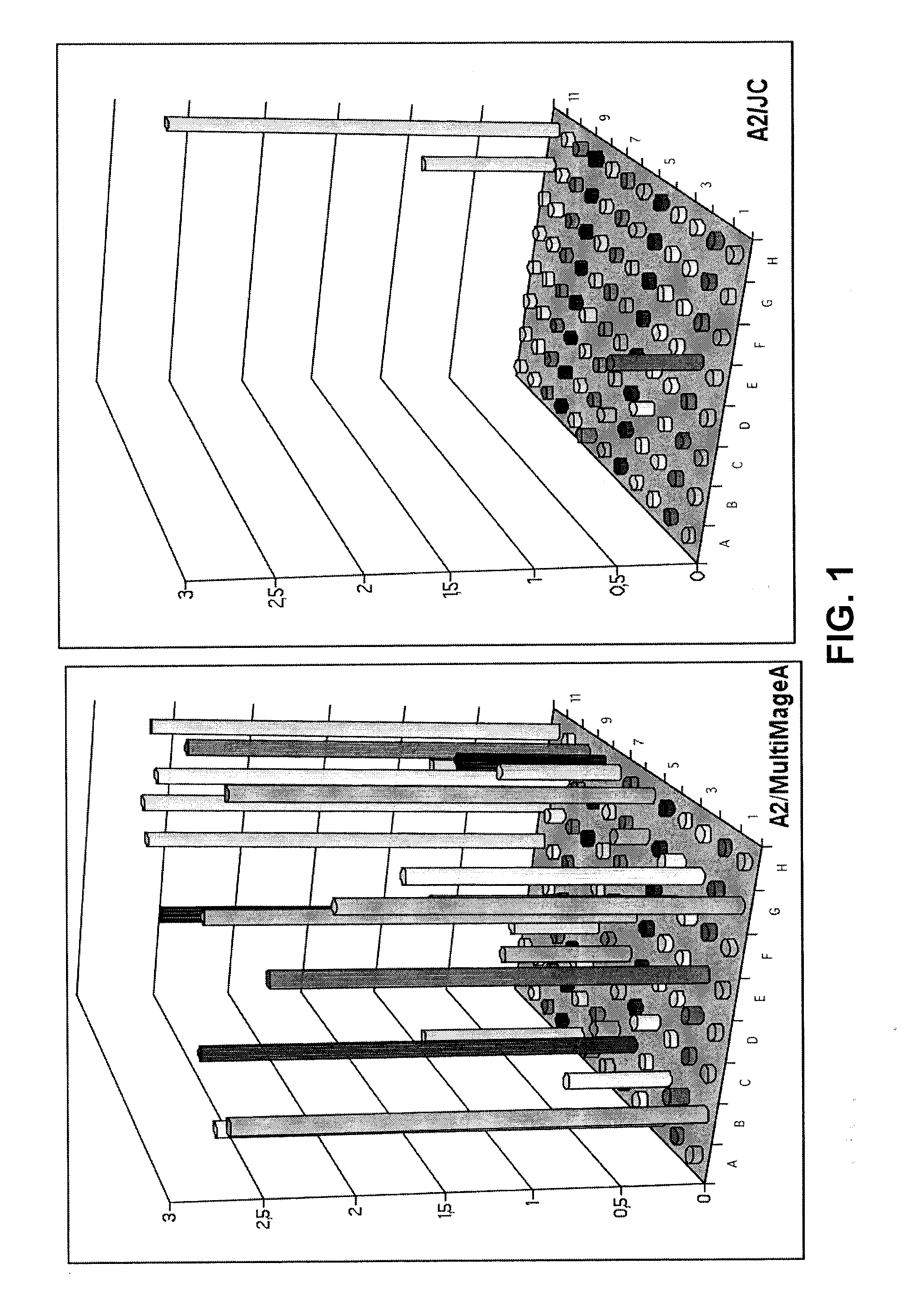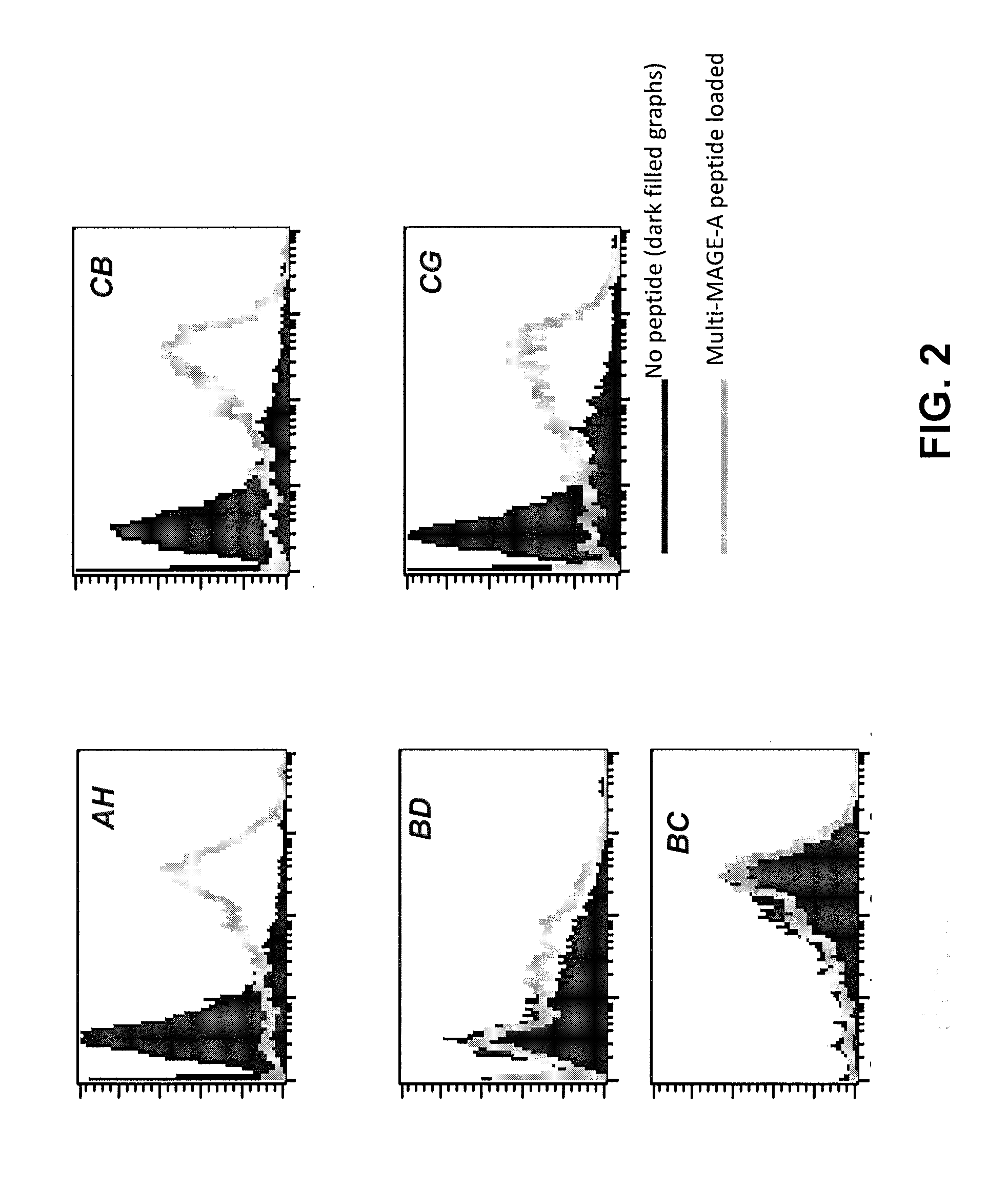Aberrant cell-restricted immunoglobulins provided with a toxic moiety
- Summary
- Abstract
- Description
- Claims
- Application Information
AI Technical Summary
Benefits of technology
Problems solved by technology
Method used
Image
Examples
example 1
[0053]Non-exhaustive examples of immunoglobulins hereof comprising at least an immunoglobulin variable region that specifically binds to an MHC-peptide complex preferentially associated with aberrant cells or to an aberrant cell surface marker preferentially associated with aberrant cells, with domain topologies as outlined for example in FIG. 5B, are:
[0054]Antibodies hereof comprising immunoglobulin variable regions that specifically bind to:[0055](a) a complex comprising a T-cell epitope selected from 146-KLQCVDLHV-154 (SEQ ID NO:74), 141-FLTPKKLQCV-150 (SEQ ID NO:75), 154-VISNDVCAQV-163 (SEQ ID NO:76), 154-YISNDVCAQV-163 (SEQ ID NO:77) of PSA, presented by HLA-A2 and / or 162-QVHPQKVTK-170 (SEQ ID NO:78) of PSA, presented by HLA-A3, and / or 152-CYASGWGSI-160 (SEQ ID NO:79), 248-HYRKWIKDTI-257 (SEQ ID NO:80) of PSA, presented by HLA-A24, and / or 4-LLHETDSAV-12 (SEQ ID NO:81), 711-ALFDIESKV-719 (SEQ ID NO:82), 27-VLAGGFFLL-35 (SEQ ID NO:83) of PSMA, presented by HLA-A2, and / or 178-NYAR...
example 2
Selection of Human Antibody Fragments Specific for HLA-A0201 / Multi-MAGE-A
[0066]To obtain human antibody fragments comprising immunoglobulin variable regions specific for the HLA-A0201 presented multi-MAGE-A epitope Y-L-E-Y-R-Q-V-P-V (SEQ ID NO:6) and FLWGPRALV (SEQ ID NO:23) a Human Fab phage display library was constructed according to the procedure previously described by de Haard et al.[2] and used for selections 1) essentially as described by Chames et al. using biotinylated MHC / p complexes,[3] or 2) on cells expressing the relevant antigen.
[0067]2.1: Selection of Human Antibody Fragments Specific for HLA-A0201 / YLEYRQVPV (SEQ ID NO:6) Using Biotinylated MHC-Peptide Complexes:
[0068]Human Fab phages (1013 colony forming units) were first pre-incubated for one hour at room temperature in PBS containing 2% non-fat dry milk (PBSM). In parallel, 200 μl Streptavidin-coated beads (Dynal™) were equilibrated for one hour in PBSM. For subsequent rounds, 100 μl beads were used. To deplete f...
example 3
Cell Binding and Internalization of an Immunoglobulin Provided with a Toxic Moiety
[0081]Binding capacity of an antibody hereof is analyzed by flow-cytometry. For example, an antibody comprising immunoglobulin variable regions specific for complexes of HLA-A0201 and the multi-MAGE-A peptide is analyzed. HLA-A0201 / multi-MAGE-A-positive tumor cells (Daju, MDN and mel 624) and HLA-A0201 / multi-MAGE-A-negative cells (BSM, G43 and 293) are incubated on ice with purified antibody and detected by addition of fluorescently labeled antibodies. Cells bound by the antibody are quantified and visualized by flow-cytometry. Internalization of antibody is analyzed by confocal microscopy. To this end, cells are incubated with the antibody, kept on ice for 30 minutes to allow binding but no internalization. Next, fluorescently labeled antibodies specific for the antibody are added. To induce internalization cells are transferred to 37° C. and fixed with 1% PFA after 5, 10 and 15 minutes.
PUM
| Property | Measurement | Unit |
|---|---|---|
| Toxicity | aaaaa | aaaaa |
Abstract
Description
Claims
Application Information
 Login to View More
Login to View More - R&D
- Intellectual Property
- Life Sciences
- Materials
- Tech Scout
- Unparalleled Data Quality
- Higher Quality Content
- 60% Fewer Hallucinations
Browse by: Latest US Patents, China's latest patents, Technical Efficacy Thesaurus, Application Domain, Technology Topic, Popular Technical Reports.
© 2025 PatSnap. All rights reserved.Legal|Privacy policy|Modern Slavery Act Transparency Statement|Sitemap|About US| Contact US: help@patsnap.com



